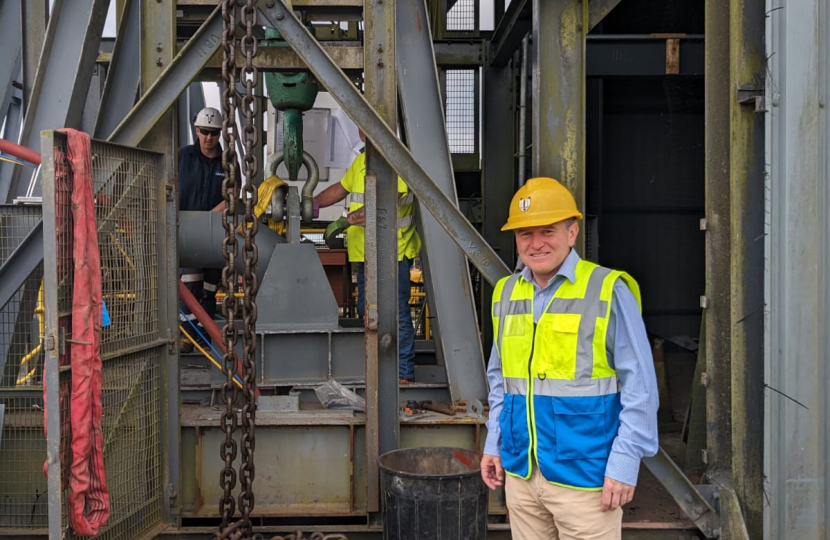
A couple of weeks ago I visited South Crofty Mine for an update and to meet the team at Cornish Metals. I have visited the project on many occasions over the last decade but in recent months there has been a very exciting breakthrough. I was visiting to see their progress on the construction of a new water treatment plant to support their plans to de-water the mine. Once open, the two huge pumps, aptly named "Camborne" and "Redruth" will enable South Crofty Mine to reopen the mine and resume tin production.
The team at Cornish Metals have made some incredible progress and attracted some serious investors who have a deep understanding of the mining business. Mining ventures are sometimes speculative and fluctuations in commodity prices can affect confidence. Many doubted whether production could resume in Cornwall but their success in raising the funds to build a state-of-the-art water treatment plant and commence de-watering represents a huge leap forward.
Cornish Metals managed to raise over £40 million at the beginning of this year to help dewater the mine and get it back up and running. They wasted no time in delivering the project with the plant nearing completion when I visited. It means that water discharged from South Crofty will be cleaner than at any time in history, so the project brings a major benefit to the environment too. It is now hoped that both pumps will be operational by early September with de-watering commencing. If things all go to plan, there is the possibility that the mine could be reopened by the end of 2024 and hopefully move to a new construction phase in advance of that.
I remember when South Crofty closed in 1998 after a prolonged period of depressed tin prices. It was a blow to our community to lose the last tin mine. However, things have changed. Legislative changes mean that lead was removed from solder which is used on every circuit board in every electronic device on the planet. The solder which is central to the electronics industry in everything from TVs to mobile phones, electric vehicles, and wind turbines, relies entirely on tin and that has led to a surge in demand and rising prices. This rise in the tin price means that production in Cornwall is viable once again but it is also important for another reason.
In an uncertain world, national resilience is becoming more important. In the late twentieth century, there was a view that globalisation meant we no longer needed to have certain primary industries because it was assumed we could always import the goods we needed. We now know that that view was quite naive because we have uncertainty around the globe and have ended up with an over-dependence on foreign states and sometimes unreliable states for the resources that our economy depends on. Last year the government published a new critical minerals strategy which explored how we can restore production and secure our supplies of critical minerals like tin. We are going to need many of these critical minerals for the industries of the future.
At the peak of the tin mining era, Redruth was one of the wealthiest towns in the country and you can still see today in the beautiful Victorian architecture around the town the legacy of that wealth. In Camborne, Holmans developed into a world-beating engineering company exporting its technology around the world employing thousands. It was still a major employer when I was growing up in the late 70s and early 80s. Often things go in cycles, and it might just be the case that we are about to see a resumption of tin mining in our area and some new engineering industries and wealth with it.

